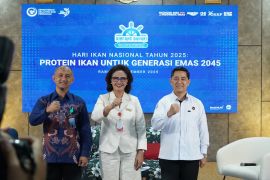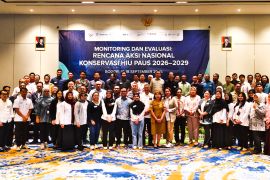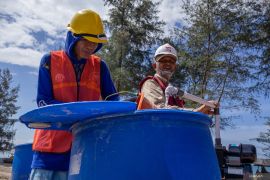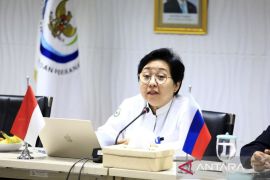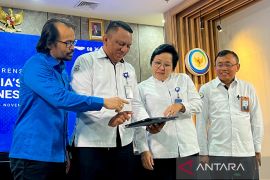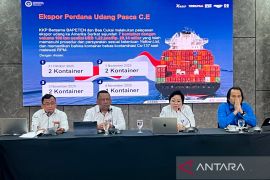Speaking at a public lecture at Gadjah Mada University (UGM) in Yogyakarta on Friday, he said Indonesia’s blue food production - covering capture fisheries, aquaculture, and seaweed - reaches at least 24 million tons per year.
To ensure the sustainability of wild fish populations, the Ministry of Marine Affairs and Fisheries is working to increase production, especially from the aquaculture sector. Trenggono noted that Indonesia’s current aquaculture output averages around 5.6 million tons annually.
He added that Indonesia has nearly 18 million hectares of land suitable for aquaculture, but only about 1.2 million hectares have been utilized.
“Aquaculture is the future, and we have been developing modern farming models for several commodities, including saline tilapia in Karawang,” he said in a statement.
The initiative in Karawang has been expanded into a broader pond revitalization program for saline tilapia farming, with its initial phase covering 20,000 hectares in West Java.
The program is projected to produce about 1.56 million tons of saline tilapia per year. This increase is supported by modern farming technologies that can raise productivity from 0.6 tons to 130 tons per hectare per cycle.
On market prospects, Trenggono expressed optimism, citing the world’s growing protein demand. He identified the Middle East as a promising export destination due to its high tilapia consumption and the presence of a large Indonesian diaspora.
According to the Food and Agriculture Organization (FAO), the global population is expected to grow by more than 30 percent by 2050, driving protein demand up by as much as 70 percent.
Related news: Supporting food sufficiency through blue economy
Related news: Bappenas urges global community to protect Indonesian seas
Translator: Shofi Ayudiana, Raka Adji
Editor: Primayanti
Copyright © ANTARA 2025

